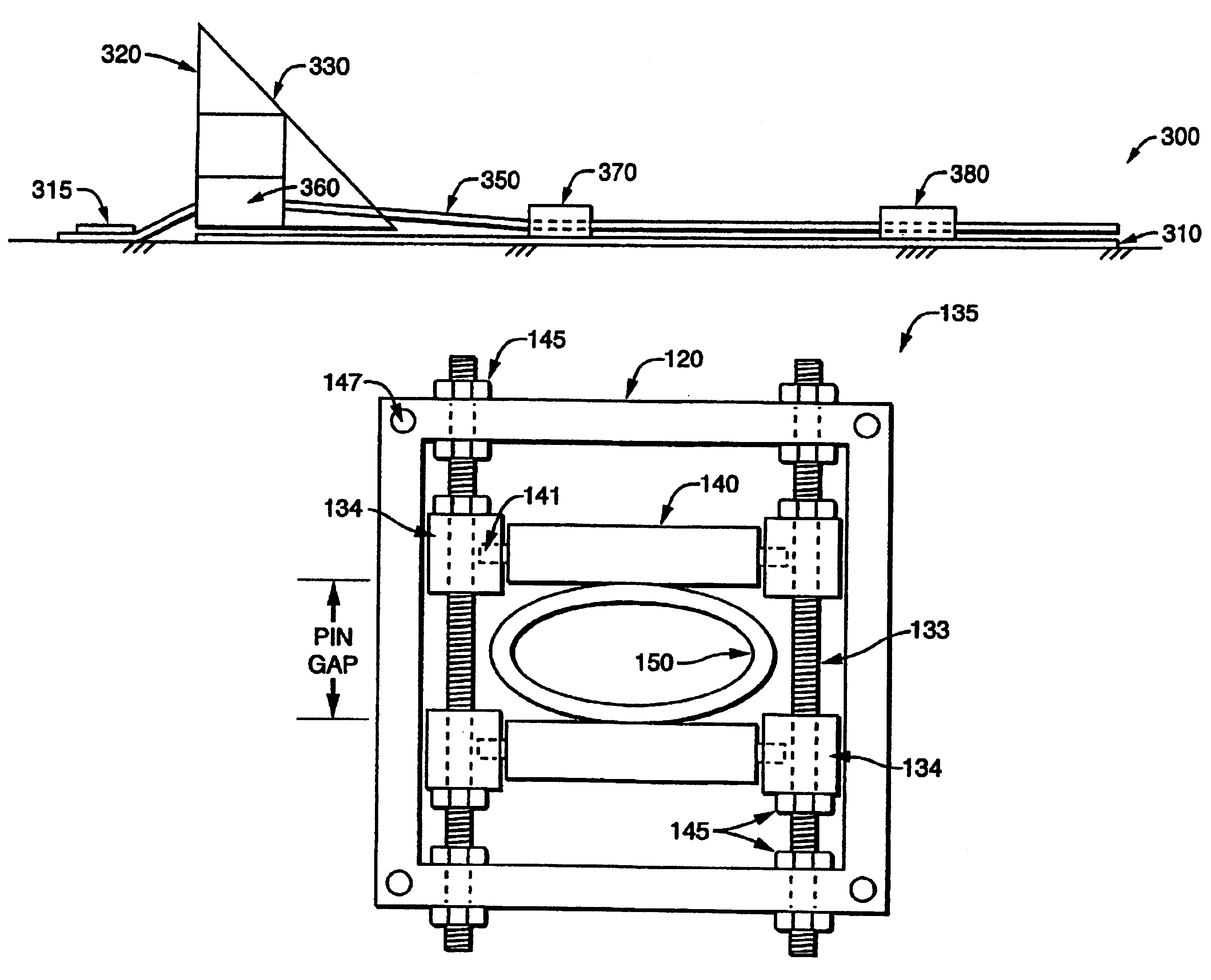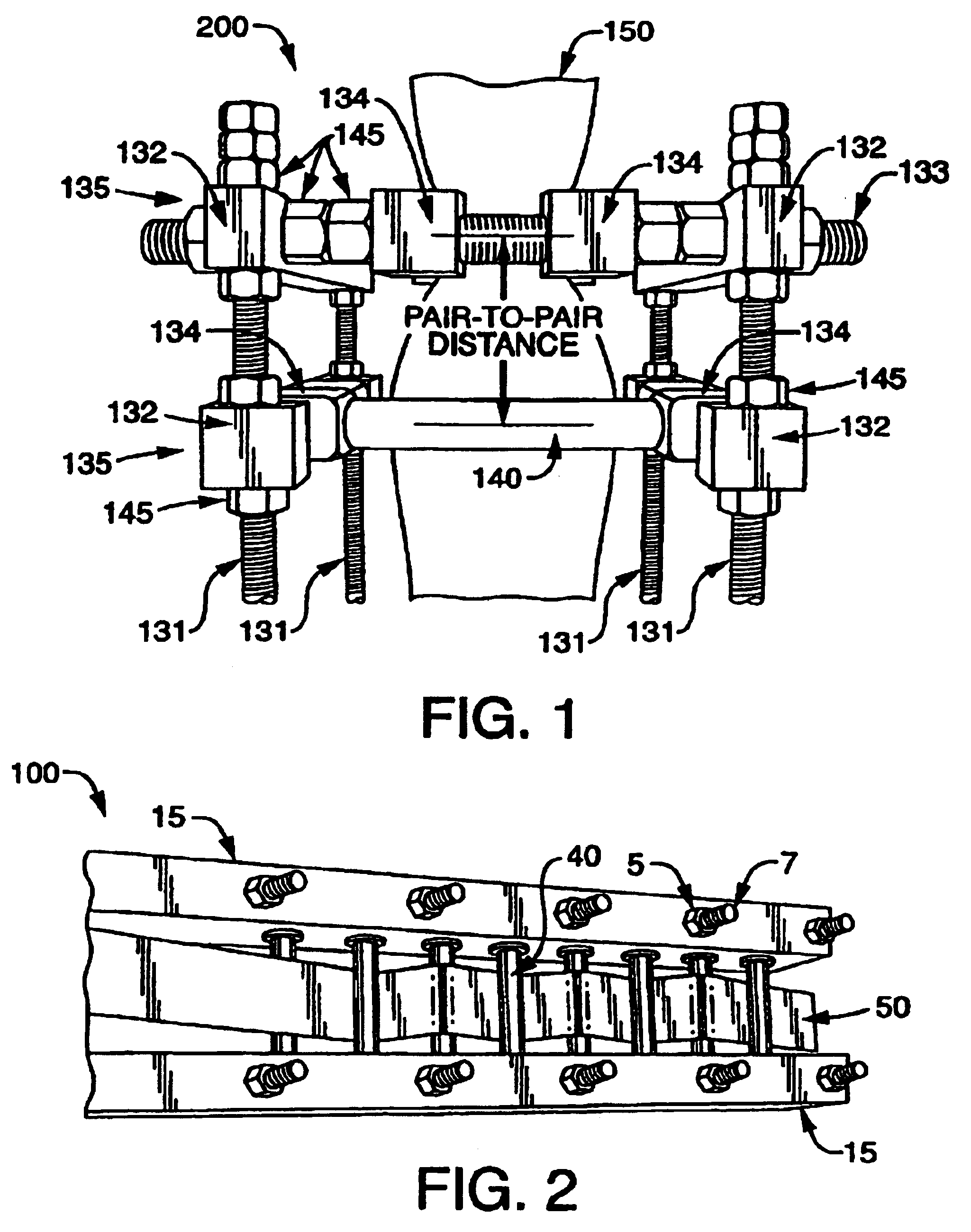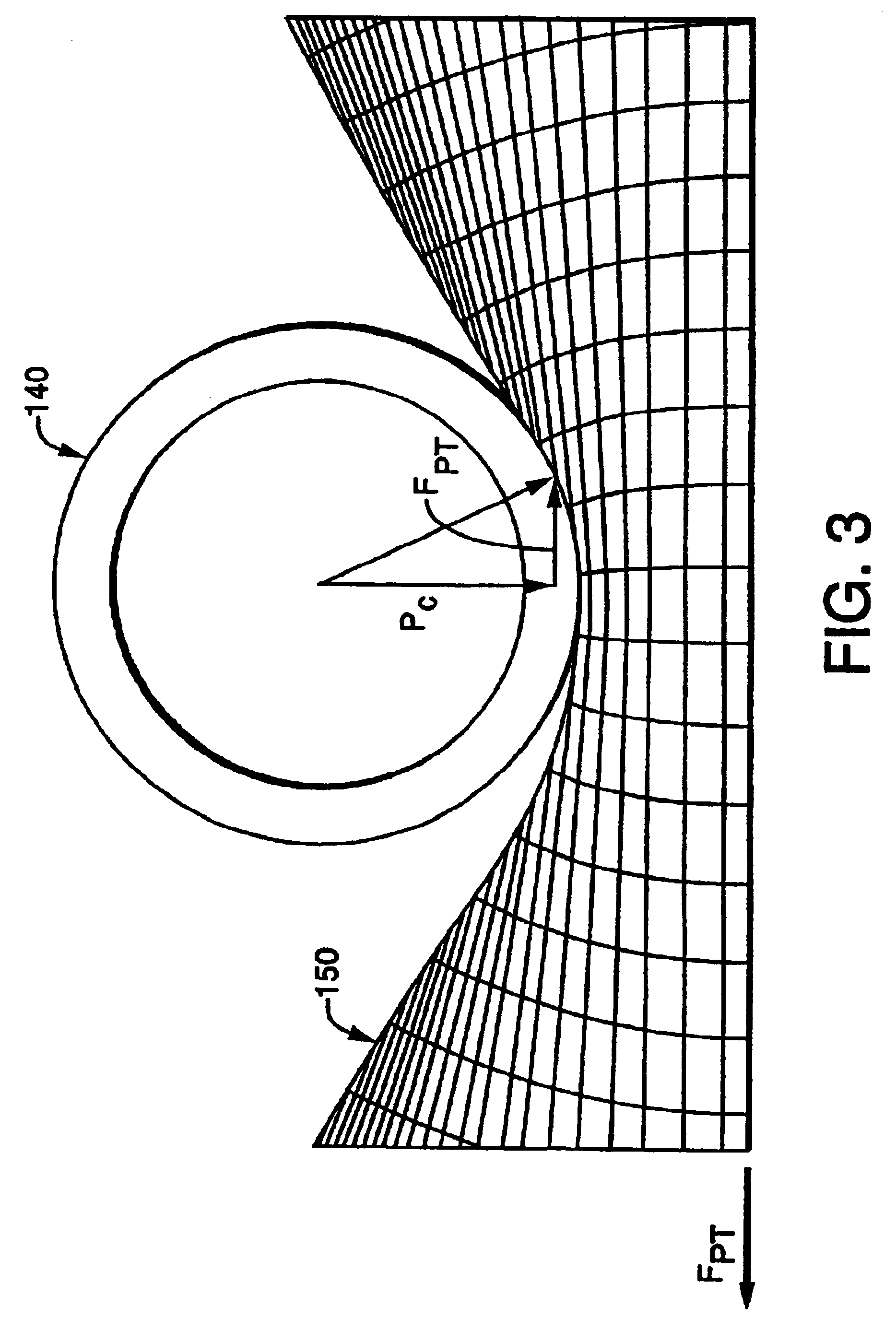Variable force energy dissipater and decelerator
a technology of energy dissipation and variable force, which is applied in the direction of spring/damper, elastic damper, way, etc., can solve the problems of ineffective management and control of harmful deceleration forces, inherently inefficient extraction of deformation energy, and inability to effectively handle a wide range of impact masses, velocities or kinetic energies, so as to minimize injury to occupants or excessive damage to equipment and vehicles, efficient and cost-effective management, and the effect of excessiv
- Summary
- Abstract
- Description
- Claims
- Application Information
AI Technical Summary
Benefits of technology
Problems solved by technology
Method used
Image
Examples
example 1
Pull-Through Strap Dissipater
[0176]Quasi-static testing of various pull-through strap energy dissipater configurations was performed with an 1800 kN laboratory load tester. Due to equipment limitations, measurements were made at low strain rates, typically less than 20″ / min. For these tests, hot-rolled 50.8 mm wide A36 steel straps were evaluated as deforming elements. Both 3.2 mm and 4.8 mm thick straps were tested. Both 12.7 mm and 19.1 mm pin diameters were evaluated. Four, five, six and eight pin dissipater module performance was compared with constant pin set spacing of 50.8 mm. To avoid unsystematic variation in results due to uncontrolled friction forces, lubricated rolling pins were used for all tests. Both unstrained and strained steel strap samples were tested in order to evaluate work hardening effects. Pull-through force FPT, energy dissipation and elongation were measure for all samples. Pull-through force and energy dissipation data for various pull-through strap dissi...
example 2
Pull-Through Tube Dissipater
[0179]Pull-through force and energy dissipation of single pin pair and two pin pair pull-through tube dissipater modules was measured with the drop tower test method described above. The influence of pin gap spacing on dissipater performance was evaluated for both module types and the influence of pin pair spacing was evaluated for two pin pair modules. Pin gap spacing of 30 mm, 35 mm and 40 mm and pin pair spacing of 100, 150 and 200 mm were studied. For both dissipater types, impact masses of 80.5 kg, 107 kg and 128 kg were employed, representing approximate impact velocities of 2.58 m / s, 3.94 m / s and 5.01 m / s. In all cases, 89 mm HDPE tubing was utilized as deforming member elements.
[0180]Test results for single pin pair modules are provided in Table 7 and plotted in FIG. 19 which shows the dissipated energy as a function of pin pair gap spacing and dissipater module displacement. As FIG. 19 demonstrates, dissipation energy increase with increasing dis...
example 3
Pull-Through Tube Energy Dissipater Crash Cushion
[0184]Using the criteria for vehicle crash cushion design performance discussed above, a variable force, pull-through tube energy dissipater was designed to achieve the requisite acceleration (deceleration) profile and thereby satisfy the three design requirements for minimizing occupant injury in a head-on collision: a) a maximum occupant impact velocity (OIV); b) a maximum g-force for occupant ride-down acceleration (ORA); and c) adequate energy dissipation to stop a 2000 kg pickup truck traveling at 100 km / hr.
[0185]As noted above, the pull-through force necessary in the first stage to meet the small car OIV requirement was shown to be 55 kN. Thus, the first task for crash cushion design was to select a configuration which will result in a force in the range for the low-force end of the cushion. In FIG. 13 a pull-through force FPT of 10 kN is obtained with a diameter-thickness ratio of approximately six for a clamping ratio of 0.775...
PUM
 Login to View More
Login to View More Abstract
Description
Claims
Application Information
 Login to View More
Login to View More - R&D
- Intellectual Property
- Life Sciences
- Materials
- Tech Scout
- Unparalleled Data Quality
- Higher Quality Content
- 60% Fewer Hallucinations
Browse by: Latest US Patents, China's latest patents, Technical Efficacy Thesaurus, Application Domain, Technology Topic, Popular Technical Reports.
© 2025 PatSnap. All rights reserved.Legal|Privacy policy|Modern Slavery Act Transparency Statement|Sitemap|About US| Contact US: help@patsnap.com



